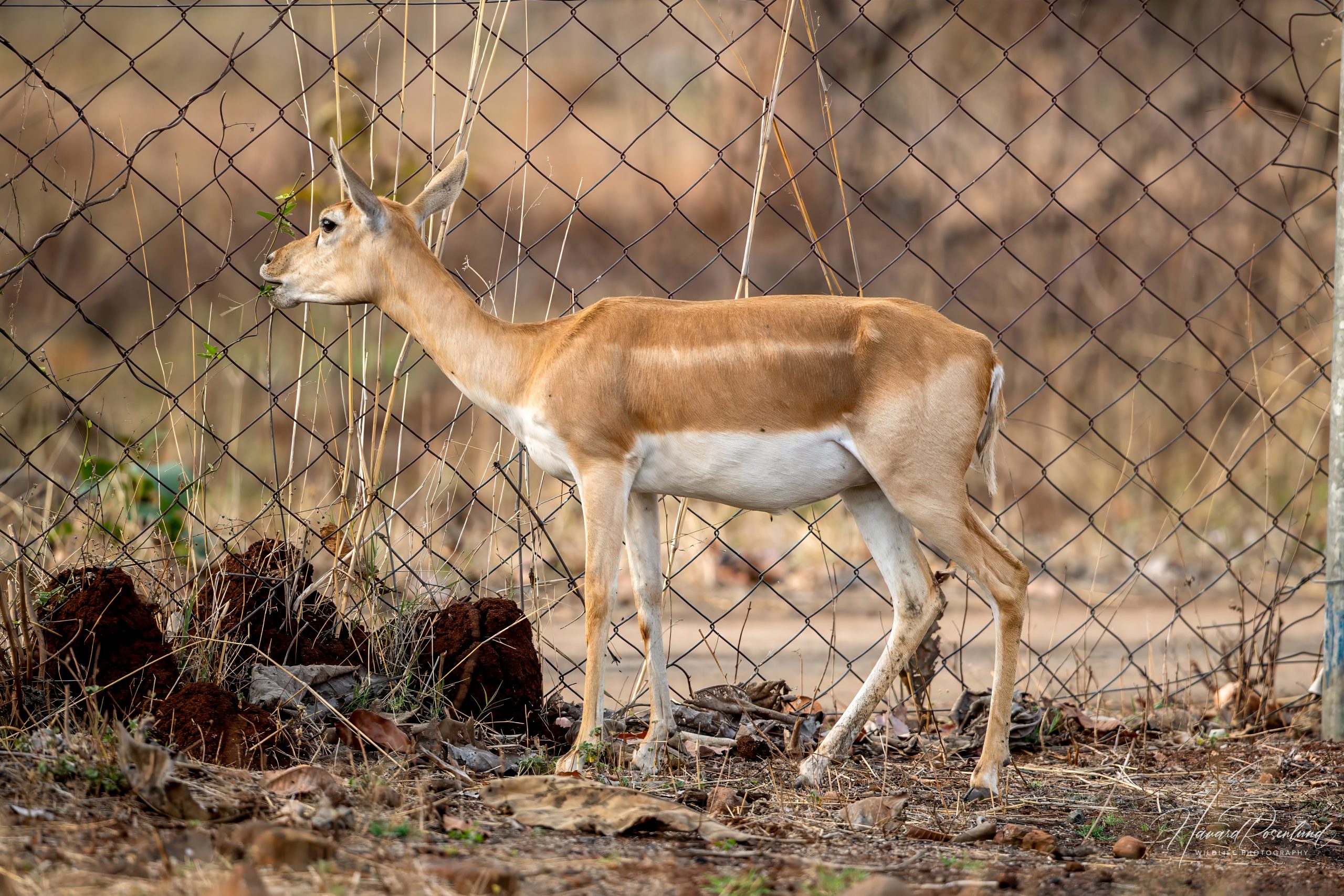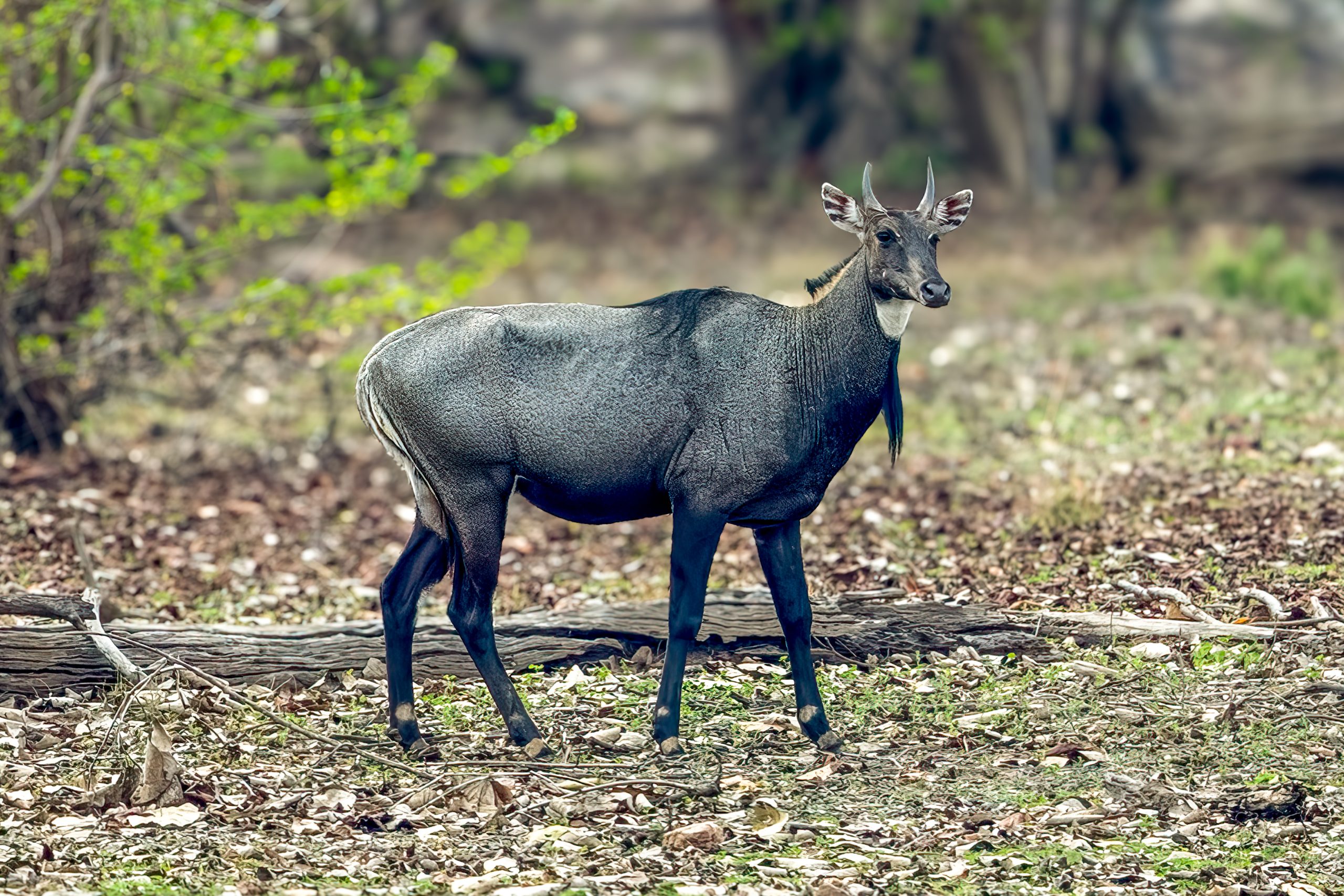Description
The blackbuck (Antilope cervicapra) is an elegant antelope species native to the Indian subcontinent. This medium-sized ungulate reaches a height of 74-84 cm (29-33 in) at the shoulder and an average weight of 38 kg (84 lbs) in males and 27 kg (60 lbs) in females. It is characterized by its long, spiraled horns, which are only present in males and can grow up to 79 cm (31 in) in length. The males exhibit a distinct two-tone color pattern with a dark brown to black upper body and white underparts, while females and young males are generally lighter, ranging from fawn to a yellowish-brown hue.
Diet & habitat
Blackbucks primarily inhabit open grasslands, savannas, and semi-desert regions. They feed predominantly on grasses, although they will also consume herbs, shrubs, and forbs. Their diet is highly adaptable, allowing them to thrive in various habitats where they graze in herds. Blackbucks are known to jump when grasping leaves on taller plants that are otherwise out of reach.
Behavior
These antelopes are diurnal, meaning they are most active during the day, particularly in the early morning and late afternoon. Blackbucks are social animals, typically forming herds consisting of females and their young. Males are territorial and use scent markings and displays to establish dominance and attract females. A dominant male will be guarding groups of females and their young when they pass through his territory. Bachelor groups of young males and solitary males also occur. The blackbuck is known for its swift running capabilities, often seen bounding gracefully across its habitat to escape predators.
Reproduction
The breeding season for blackbucks varies by region but generally peaks during the cooler months. Males engage in intense displays of dominance and combat for mating rights and territories. Once a female is courted successfully, the gestation period lasts about six months, resulting in the birth of a single calf, though twins are occasionally reported. Calves are hidden in vegetation by the mother for the first few weeks of life to protect them from predators. Blackbucks reach sexual maturity at around two years of age and can live up to 12-15 years in the wild.
Introduced populations
The blackbuck has been introduced to several countries outside its native range, with noticeable introductions in the United States (particularly Texas) and Argentina. These introductions began in the mid-20th century primarily for game hunting and wildlife conservation purposes. In these new environments, blackbucks have generally thrived, with stable or growing populations. However, their introduction can have ecological impacts, including competition with native species and potential habitat alteration.
Status
The blackbuck is currently classified as least concern on the IUCN Red List, but its populations have faced significant declines in the past due to hunting and habitat loss. Conservation efforts, including legal protection and the establishment of reserves, have helped stabilize and, in some regions, increase their numbers. Despite these efforts, the blackbuck’s habitat continues to be threatened by agricultural expansion and infrastructure development, necessitating ongoing conservation attention.








